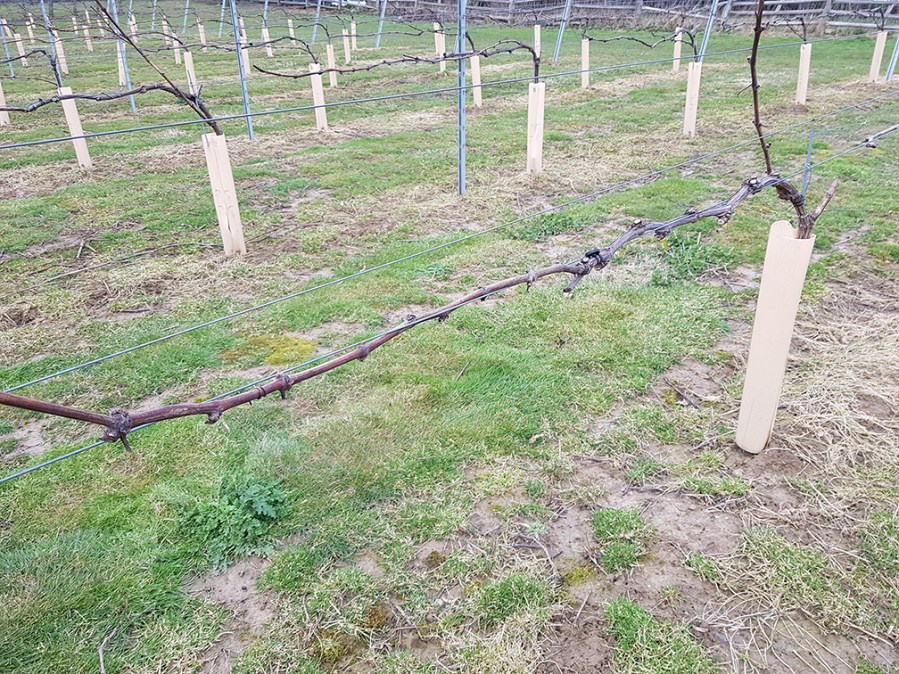Tying down is an essential task that takes place heading into Spring, writes Tim Ferris of Vine-Works. As most vines are pruned to a “Guyot or cane system” there are shoots from the previous year that have matured into “canes” from which this year’s shoots will grow. The canes go from a vertical shoot position (VSP) to horizontal, ready for this year’s shoots to reach for the sky!
Ideally, tying down takes place as the canes become supple thanks to rising soil temperatures which cause sap to flow upwards into the canes from the roots. If tying down is attempted too early, the canes are brittle and can easily snap – a disaster for your yields.
Likewise, after budburst the act of tying down can rub off newly forming shoots, once again impacting yields. Unfortunately, going too late is unavoidable when sacrificial canes must be tied down (in the event of a frost). Therefore, timing your tying down is crucial.
There are many variations of pruning methods, including but not limited to, Guyot style pruning. Within the Guyot style one might encounter the following:
- Single Guyot – one cane for tying down
- Double Guyot – two canes for tying down
- Single Guyot with one/two sacrificial canes (sacrificial canes left untied and vertical)
- Double Guyot with one/two sacrificial canes (sacrificial canes left untied and vertical)
The reason you may leave “sacrificial” canes is to mitigate against frosts. Tying down your intended canes to the fruiting wire brings them closer to the ground and nearer to cold air that could damage or kill the buds from which you are hoping to yield fruit in the new growing season. Should a frost occur, the sacrificial canes can become your fruiting canes as they are less likely to have been damaged by a frost, having remained vertical with buds up out of harm’s way. If there is no frost, the sacrificial canes are removed (sacrificed) – cruel, but a kindness to the vine and the back pocket in the end.
Various supplies are available for this task: Max Tapener guns, Ligatex guns, Raffia, and our preferred hardware: paper-coated twist ties. The reason we like to use these is that they are effective and affordable, it requires very little training to use them and it keeps life simple. The philosophical being massively important in viticulture, KISS (Keeping It Short and Simple), is one that can make life as a vineyard manager more than tolerable.
When actually cane-in-hand, tying down, it is good practice to keep the buds approximately one or two fist widths apart. To achieve this near the vine trunk, canes can be made even more flexible by gently cracking the wood before attempting to bend it. This will help you turn corners more sharply from the vertical to the horizontal and save space on the wire.
If you are looking to maximise the number of buds per metre of fruiting wire, one might employ the “Pendelbogen” method, arching your canes over a second fruiting wire installed slightly above your first fruiting wire. This method often suits high vigour varieties and can also be used to combat the “End-point principle” (more on this another time).
Finally, it is normal to twist the cane for tying down (Pendelbogen or conventional) around the fruiting wire. We recommend you twist the cane around the wire just once. The reason being, it is easier to remove these canes at pruning in the following year, another KISS-ing moment and money in the bank!




